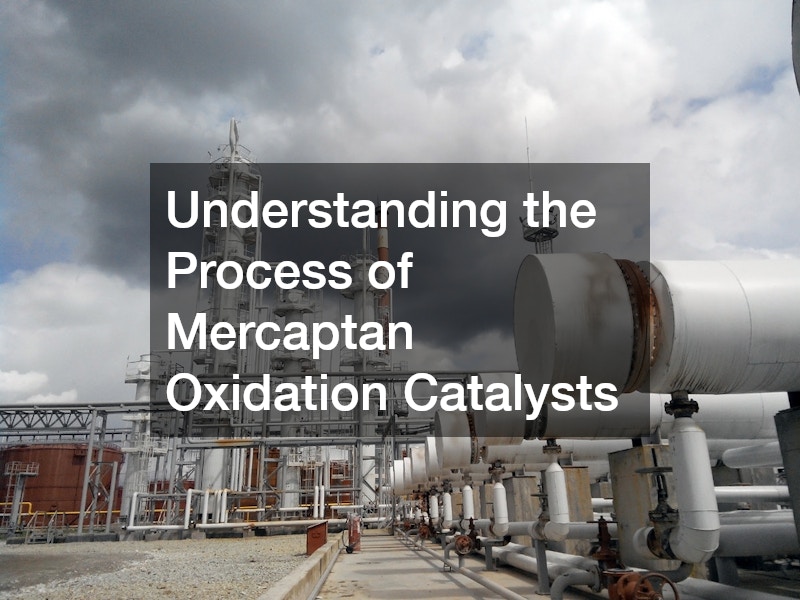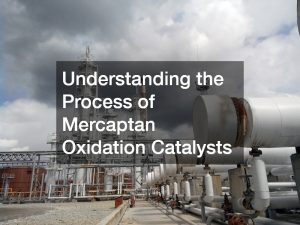In this article, we will delve into the intricate process of mercaptan oxidation catalysts, exploring their significance, mechanisms, and applications. By addressing common questions about mercaptan oxidation, we aim to shed light on this esoteric yet vital area of study.
What are Mercaptan Oxidation Catalysts?
Definition and Importance
Mercaptan oxidation catalysts are substances that accelerate the oxidation of mercaptans, which are organosulfur compounds. They play a crucial role in the process of desulfurization, essential for reducing harmful sulfur emissions.
These catalysts are important for transforming mercaptans into less harmful disulfides. This transformation is vital for industries aiming to comply with environmental standards and regulations. Their significance is further recognized in industries like oil refining, where they help lower sulfur content in fuels. This reduction in sulfur content contributes significantly to the production of cleaner fuels and improved air quality.
How They Work
Mercaptan oxidation catalysts facilitate chemical reactions by lowering the activation energy needed for the oxidation process. They enable the conversion of mercaptans into disulfides, which are less volatile and less odorous than their precursors. This mechanism primarily involves the transfer of electrons from the mercaptans to the oxidizing agents. By doing so, the catalysts ensure efficient removal of sulfur compounds from fuels and other materials. In practical applications, they help maintain the balance between reaction rates and catalyst life. The use of such catalysts ensures the optimal performance of oxidation processes, making them invaluable in industrial operations.
Why is Mercaptan Oxidation Essential?
Environmental Impact
The environmental significance of mercaptan oxidation lies in its ability to reduce sulfur emissions, a major component of air pollution. By decreasing sulfur content in fuels, these catalysts help mitigate the harmful effects of acid rain. Lower sulfur emissions contribute to improved air quality, benefiting public health and the environment. Without these catalysts, industries would struggle to meet stringent environmental regulations aimed at reducing pollution. Furthermore, successful mercaptan oxidation supports global efforts to combat climate change. By decreasing the release of sulfur compounds, these processes play a key role in sustainable development.
Industrial Applications
Industries such as petrochemical, natural gas, and petroleum rely heavily on mercaptan oxidation processes. These processes are essential for adhering to environmental regulations and maintaining high product quality. In oil refineries, for example, mercaptan oxidation is used to improve the quality of gasoline and diesel. By reducing sulfur content, the resulting fuels burn cleaner, producing fewer pollutants. In the production of natural gas, mercaptan oxidation helps remove contaminants that can corrode pipelines and affect the usability of the gas. This ensures that natural gas products are safe and reliable for end-users.
What are the Different Types of Catalysts Used?
Commonly Used Catalysts
Common types of mercaptan oxidation catalysts include metal-based catalysts such as cobalt and iron complexes. These catalysts are known for their high efficiency and robust performance in oxidation reactions. Another popular group includes enzyme-based catalysts, which are increasingly favored for their environmental friendliness and biodegradability. These catalysts are often implemented in bio-based processes for sustainable chemical manufacturing. Zeolite-supported catalysts are also used widely due to their high stability and surface area. Their unique structural properties provide numerous sites for chemical reactions, enhancing the catalyst’s effectiveness.
Comparative Analysis
When comparing different catalysts, metal-based catalysts often stand out for their quick reaction rates and cost-effectiveness. However, enzyme-based catalysts offer advantages in terms of sustainability and lower environmental impact. Zeolite-supported catalysts, while perhaps more expensive, provide exceptional stability under varied processing conditions. This makes them ideal for long-term industrial applications where consistency is key. The choice of catalyst often depends on the specific needs of the application, including factors such as temperature, pressure, and desired reaction time. Ultimately, the suitability of a catalyst is determined by the balance between its performance and operational costs.
How is the Efficiency of Mercaptan Oxidation Catalysts Measured?
Performance Metrics
Efficiency of mercaptan oxidation catalysts is primarily measured in terms of conversion rate and selectivity. Conversion rate refers to the amount of mercaptan processed over a specific timeframe. Selectivity indicates how well the catalyst converts mercaptans into the desired disulfides rather than by-products. High selectivity is crucial for achieving optimal environmental and economic outcomes. Additional performance metrics include catalyst stability and longevity. These metrics offer insights into how long the catalyst can maintain its efficacy under industrial conditions.
Testing and Analysis Methods
Testing methods for evaluating catalyst performance include techniques such as gas chromatography and mass spectrometry. These analyses help quantify sulfur concentrations and monitor reaction progress. In real-world applications, pilot studies and scaled-up testing are used to assess catalyst behavior under operational conditions. This data aids in understanding how catalysts perform over extended periods. Another key method involves in situ monitoring, which provides real-time data on the reaction environment. This helps in optimizing process parameters to enhance catalyst performance.
What are the Future Trends in Mercaptan Oxidation Catalysis?
Innovations in Catalyst Development
Future trends in mercaptan oxidation catalysis focus on the development of more sustainable and efficient catalysts. Innovations are increasingly targeting catalysts with greater environmental compatibility and enhanced degradation resistance. The integration of nanotechnology in catalyst design is opening up new pathways for enhanced activity and selectivity. Nano-catalysts with modified structures promise to improve reaction rates and reduce operational costs. Moreover, there is ongoing research into biocatalysts that can perform under milder conditions. These innovations are paving the way for greener technologies that align with global sustainability goals.
Challenges and Opportunities
Challenges in mercaptan oxidation catalysis include the need to develop cost-effective and scalable solutions. Balancing the trade-offs between catalyst life span and catalytic activity remains a significant concern. However, advancements in materials science provide opportunities to overcome these challenges. Improved catalyst designs and compositions could broaden the scope of applications. Innovative collaboration between academia and industry is essential to harness these opportunities. Such partnerships can drive the development of next-generation catalysts for a more sustainable future.
.


















